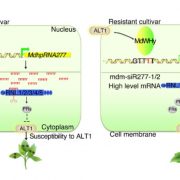
What a difference a base makes: A single nucleotide confers Alternaria resistance in apple ($) (Plant Cell)
Plant Science Research WeeklyGolden Delicious apples are particularly susceptible to the fungal pathogen Alternaria alternaria f. sp. mali. Zhang et al. have traced this susceptibility to a single nucleotide in the promoter of gene encoding a hairpin RNA (hpRNA), MdhpRNA277. This hpRNA produces small RNAs that selectivey target…
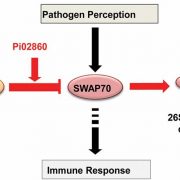
Phytophthora effector exploits host susceptibility factor NRL1 (PNAS)
Plant Science Research WeeklySome pathogen effectors disarm a plant’s immunity directly, for example through targeting resistance genes, whereas others work indirectly, through the plants own susceptibility (S) factors. He et al. provide an example of the latter. Previously, the authors showed that the Phytophthora infestans effector…

Best of both worlds: a free living insect with an endophytic-like feeding strategy (eLIFE)
Plant Science Research WeeklyEndophytic insects, which spend much of their life inside of plant tissues (e.g., leaf miners and gall-forming insects) are well-known for manipulating plant host physiology to their advantage, unlike free living herbivore insects whose game plan relies on their ability to move and find the most nutritious…
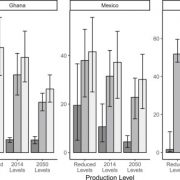
Carbon storage and land-use strategies in agricultural landscapes across three continents (Curr. Biol.)
Plant Science Research WeeklyAs we face increasingly odd weather patterns resulting from elevated CO2 emissions to the atmosphere, the question of how best to balance the need to produce food with the desire to minimize CO2 emissions becomes increasingly urgent. Williams et al. compared the effects of different types of land-use…
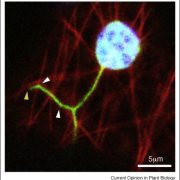
Review: Shaping plastid stromules — principles of in vitro membrane tubulation applied in planta ($) (COPB)
Plant Science Research WeeklyStromules (or stroma-filled tubules) have been observed for more than 100 years, but uncertainty remains about their formation and function. Stromules are extensions of the plastid membrane that form highly dynamic tubule-like structures that sometimes interact with other plastids or organelles. Hypothetical…

Paint the tobacco red: Anthocyanin production in tobacco cells lines
Plant Science Research WeeklyAnthocyanins are common plant pigments that provide dietary benefits, causing an increase in their use as a food coloring agents. However, purifying anthocyanins from current plant sources (such as waste grape skins, red cabbage and berries) is expensive and creates a variable product. Modifying biosynthetic…
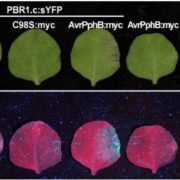
Convergent evolution of effector protease recognition by Arabidopsis and barley (bioRxiv)
Plant Science Research WeeklyPathogenic bacteria Pseudomonas syringae produce an effector protein, AvrPphB. The indirect interaction between this bacterial effector and the Arabidopsis resistance (R) protein RPS5 has been characterized previously; AvrPphB is a cysteine protease that targets another plant protein, PBS1, causing it…
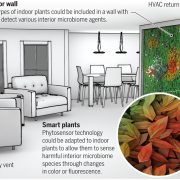
Phytosensors at home ($) (Science)
Plant Science Research WeeklyIn this review Stewart et al. address the potential use of houseplants as biosensors for harmful agents in the home environment, taking advantage of phytosensor technology already in use in agricultural settings. The authors propose the design of genetically modified plants that carry a synthetic promoter…
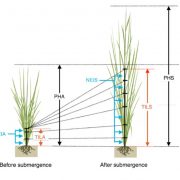
Ethylene-gibberellin signaling underlies adaptation of rice to periodic flooding ($) (Science)
Plant Science Research WeeklyThe diverse responses of rice to flooding are really interesting. Many varieties die, some survive by essentially becoming metabolically quiescent to conserve their energy (which involves the Sub1 pathway), and some, called deepwater rice, respond through rapid elongation that elevates their leaves above…

